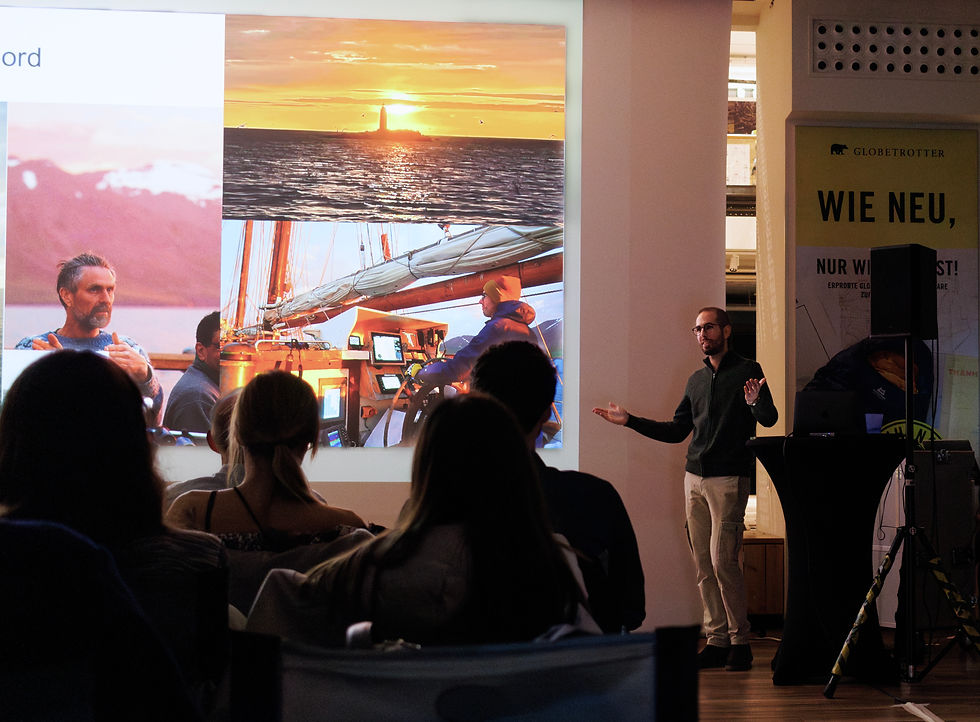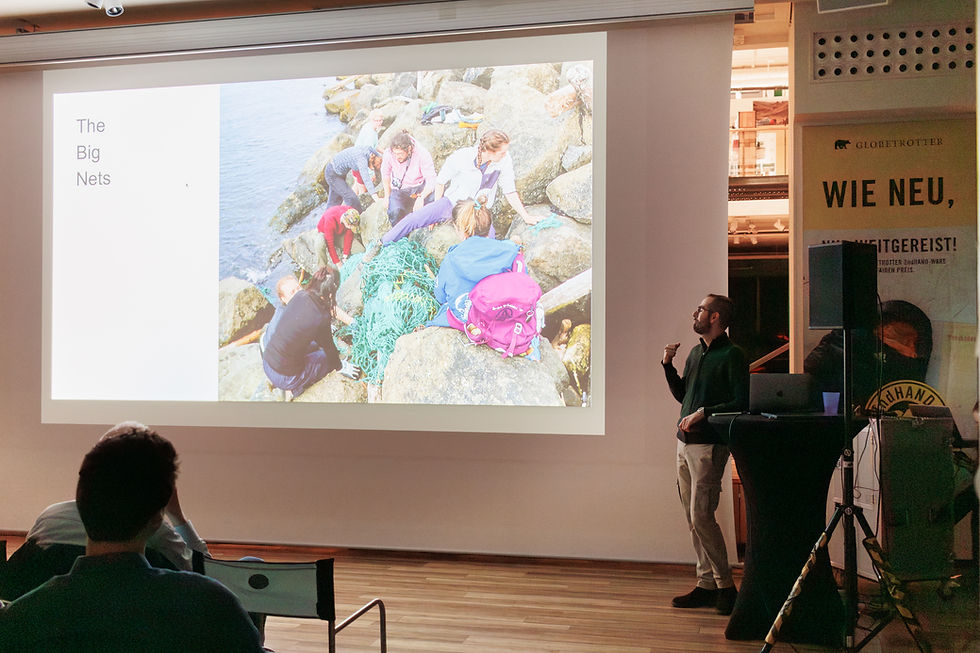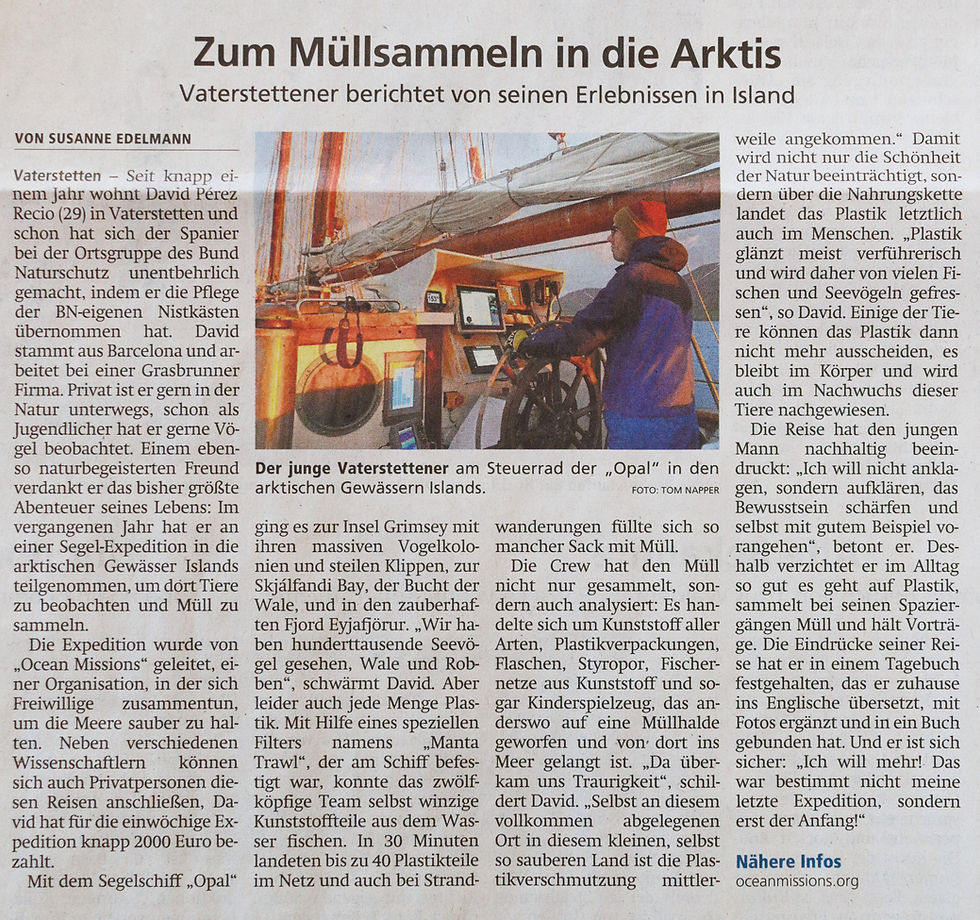The Globetrotter Presentation
- David Pérez Recio
- Jan 26
- 2 min read
In one of those serendipitous moments life occasionally gifts us, I stumbled upon the "Munich Explorer's Club" throught the MeetUp app. This was a gathering of adventurers, dreamers, and storytellers from Munich who meet to share their tales of discovery. The meeting place? The iconic Globetrotter store in the heart of the city—a venue brimming with the promise of journeys yet to come. Intrigued and inspired, I reached out, shared my story, and was thrilled when they offered me the chance to take the stage and present.
When I arrived, I was informed that I would be the first speaker and that around 60 people were in attendance. That was unexpected, but if there’s one thing I learned in Iceland, it’s to say yes more.

I began, naturally, with an introduction and quickly moved on to recount the route we followed through the Hope Spot—two fjords and Grímsey Island. I described the untouched, virgin environment, the richness of its wildlife, and our mission. I also shared personal highlights, like when the captain taught me how to navigate. With a map in hand, he simply said, "Just don’t crash," and left me to sail the boat. For four hours, I guided us from Arctic waters to Sub-Arctic regions, through the Eyjafjörður fjord, and finally into the port of Hrísey Island. All of this unfolded under the warm glow of the midnight sun—an unforgettable moment and undoubtedly one of the most magical experiences of my life. But then, I shifted the focus. After sharing the magic of the expedition, I turned to the research and the hidden monster we encountered: plastic pollution.

As I explained how our manta trawl apparatus retrieved an alarming number of microplastics in such a short time, the expressions in the room shifted from joyful curiosity to somber concern. In some samples, we found over 40 microplastic particles. And then there were the larger culprits: fishing nets.

Many fishing nets break apart, becoming entangled in rocks where they degrade slowly, releasing millions of microplastics into the ocean. Under the microscope, I could often identify these tiny fragments as pieces of these massive polluting nets. Whenever we found one, we tried to retrieve it. Over the course of the expedition, we removed hundreds of kilos of these destructive remnants.
The presentation was well-received, sparking numerous questions about conservation. While I don’t claim to be an expert and couldn’t offer definitive solutions, I emphasized the importance of individual action and spreading awareness. For me, the true success lay in sharing my experiences and inspiring others to recognize the urgency of keeping our planet clean.


Comments